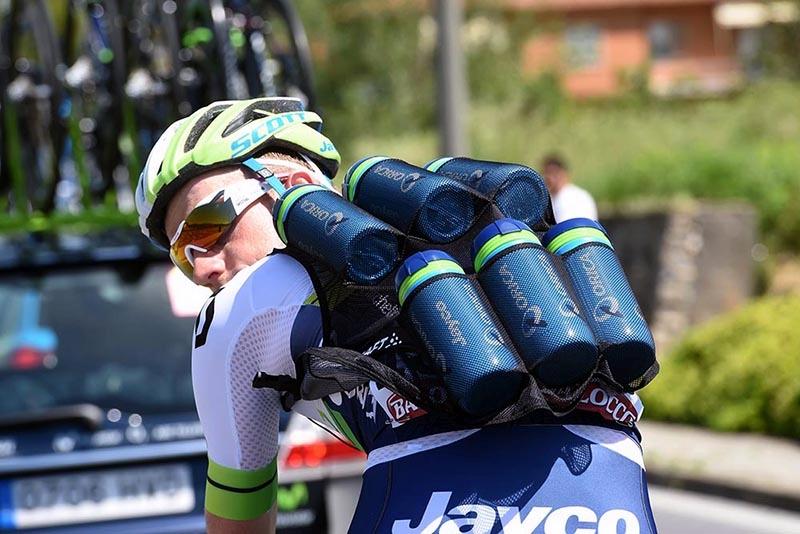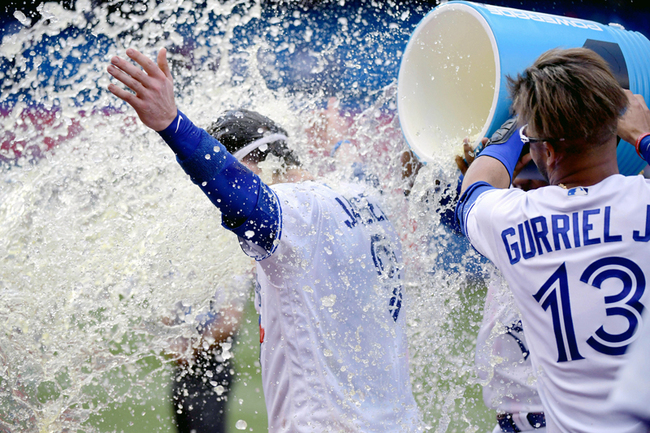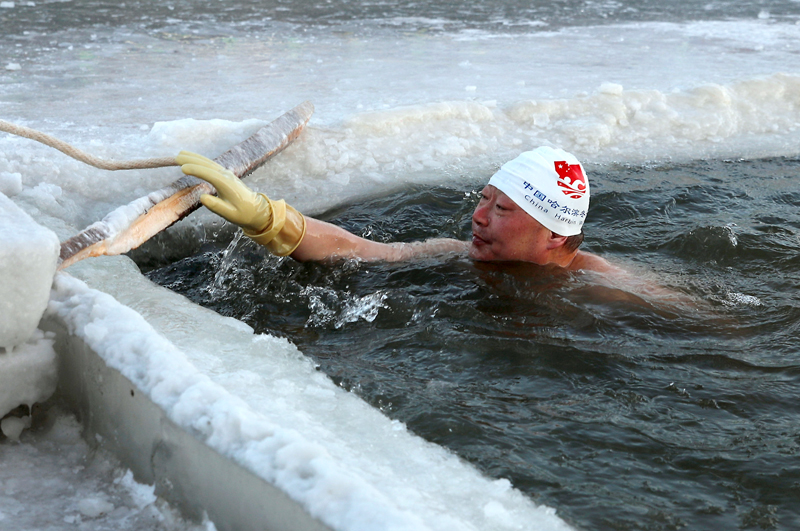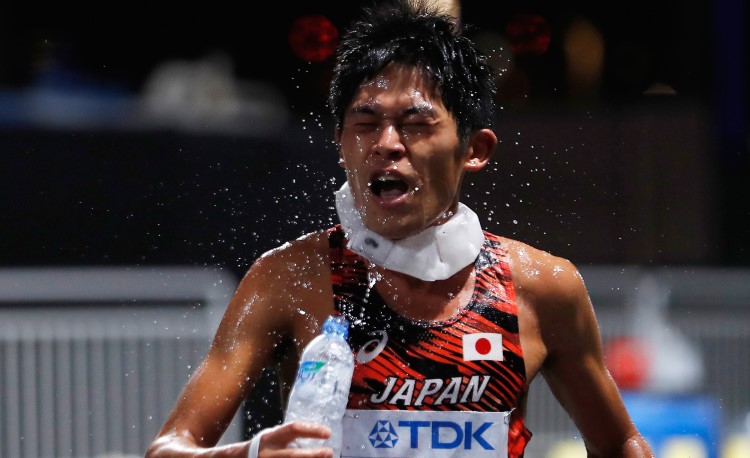Drink to it: why ice is your hot-weather friend

Sports Performance Bulletin investigates recent research on the merits of consuming ice-cold drinks and ice slurries during hot-weather training and competition
When the mercury rises, endurance performance can suffer – particularly in longer events. One reason is that a combination of heavy sweating and inadequate fluid replacement can lead to dehydration. While the body can tolerate modest amounts of dehydration without impacting performance, higher levels (above 2-3%) can significantly impair performance. There’s also the effect of heat itself. When the body diverts blood flow to the skin in order to lose heat, the blood and oxygen supply to exercising muscles is reduced, which then affects maximum work capacity.It’s no surprise therefore that in hot conditions, strategies that can help prevent the body’s core temperature from rising excessively can help maintain performance. Wearing cool garments and using water sprays are one way to help cool the body on the move. Another is to cool the body from the inside by using very cold or iced drinks. Ice is particularly useful for cooling because it takes a lot of heat energy to turn ice at 0C to water at 0C (more technically known as the latent heat of fusion). For this reason, ice slurry drinks have been investigated by researchers for their cooling properties, and some research suggests that consuming an ice slurry drink can be as effective at protecting performance in the heat as undergoing heat acclimatisation!
The research
In one study, scientists investigated the performance effects of a pre-cooling ice drink consumed before a cycling time trial performed in the heat [Int J Sports Physiol Perform. 2018 Feb 1;13(2):228-234]. In particular, they wanted to see how these benefits compared with the more traditional way of coping with heat - a period of heat acclimatisation training. To do this, fifteen male cyclists/ triathletes completed two cycle time trials in the heat, with a 12-day training programme in between. In the first trial, all the participants consumed 7g of water per kilo of bodyweight prior to completing a time trial in hot and humid conditions (35°C and 50% relative humidity). The participants were then split into two groups:- Pre-cooling group – the subjects trained for twelve days as usual in normal weather conditions (ie not hot and humid).
- Heat acclimatisation group – the subjects trained for twelve days in hot conditions (35°C and 50% humidity).
The results
When the results of the second time trial were compared, both groups improved compared to the first trial. Moreover, it became clear that the pre-time trial ice drink was just as effective at improving performance (a 166-second improvement) as heat acclimatisation training (a 105-second improvement). Indeed the ingestion of ice produced a greater improvement in times, but because of the small number of subjects in the trials, the scientists were unable to conclude whether this extra gain was statistically significant. What was clear was that when ice was ingested, the cyclists’ core temperatures stayed lower for longer and they also started sweating later into the time trial. Also, they reported lower levels of ‘thermal distress’, all of which led the researchers to conclude that ‘pre-cooling with ice ingestion offers an alternate method of improving endurance cycling performance in hot conditions if heat acclimation cannot be attained’.Implications for sportsmen and women
These results are in line with previous recent research, which has found consuming ice slurry before and during endurance events in the heat can improve performanceScand J Med Sci Sports. 2015 Jun;25 Suppl 1:39-51. doi: 10.1111/sms.12366. However, what’s interesting about this research is that it tells us these benefits are significant, and at least equal to twelve days of heat acclimatisation training. This could be a real boon for athletes who are competing in hot events but don’t have the time or money to travel early and undergo heat acclimatisation. It would have been good to have a third group of athletes who underwent heat acclimatisation AND consumed ice drinks, to see whether these benefits are additive. But that’s another study for another day!Practical advice
- In hot conditions, always start any exercise well hydrated.
- Prior to starting (eg on the race start line), try to keep in the shade and consume very cold or (even better) iced drinks.
- If you have support from family friends, ask them to bring a cold box and supply iced drinks en route and/or pass you ice packs for further cooling.
- Use a compact, portable water spray for additional cooling.
- Don’t forget clothing; white reflective clothing will be cooler than dark colours, and materials that wick away moisture from the skin will help reduce unpleasant thermal sensations further.
- If you can undergo some pre-event heat acclimatisation, this will help you in the later stages of a hot race, when the benefits of ice have worn off and when further ice drinks may not be available.
You need to be logged in to continue reading.
Please register for limited access or take a 30-day risk-free trial of Sports Performance Bulletin to experience the full benefits of a subscription. TAKE A RISK-FREE TRIAL
TAKE A RISK-FREE TRIAL
Newsletter Sign Up
Testimonials
Dr. Alexandra Fandetti-Robin, Back & Body Chiropractic
Elspeth Cowell MSCh DpodM SRCh HCPC reg
William Hunter, Nuffield Health
Newsletter Sign Up
Coaches Testimonials
Dr. Alexandra Fandetti-Robin, Back & Body Chiropractic
Elspeth Cowell MSCh DpodM SRCh HCPC reg
William Hunter, Nuffield Health
Keep up with latest sports science research and apply it to maximize performance
Today you have the chance to join a group of athletes, and sports coaches/trainers who all have something special in common...
They use the latest research to improve performance for themselves and their clients - both athletes and sports teams - with help from global specialists in the fields of sports science, sports medicine and sports psychology.
They do this by reading Sports Performance Bulletin, an easy-to-digest but serious-minded journal dedicated to high performance sports. SPB offers a wealth of information and insight into the latest research, in an easily-accessible and understood format, along with a wealth of practical recommendations.
*includes 3 coaching manuals
Get Inspired
All the latest techniques and approaches
Sports Performance Bulletin helps dedicated endurance athletes improve their performance. Sense-checking the latest sports science research, and sourcing evidence and case studies to support findings, Sports Performance Bulletin turns proven insights into easily digestible practical advice. Supporting athletes, coaches and professionals who wish to ensure their guidance and programmes are kept right up to date and based on credible science.









